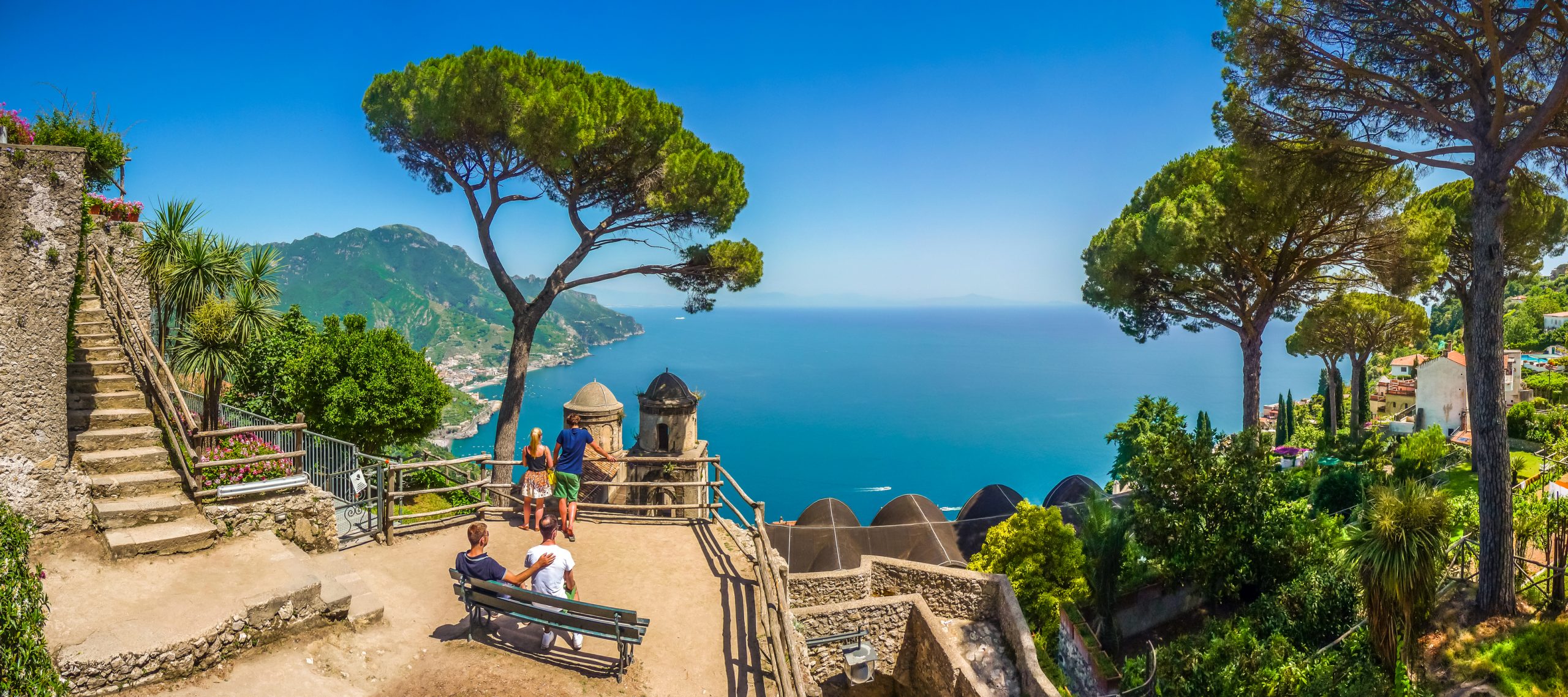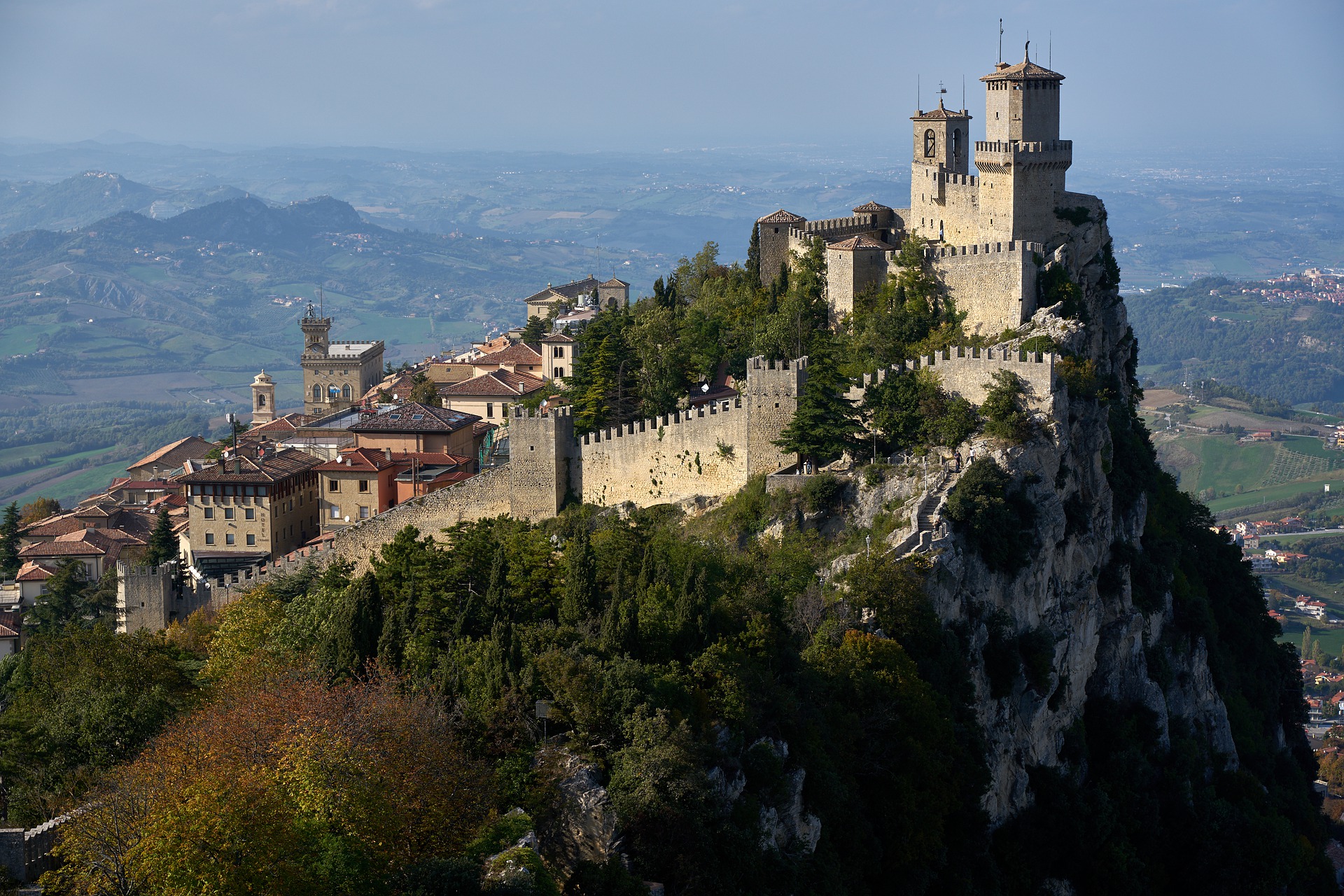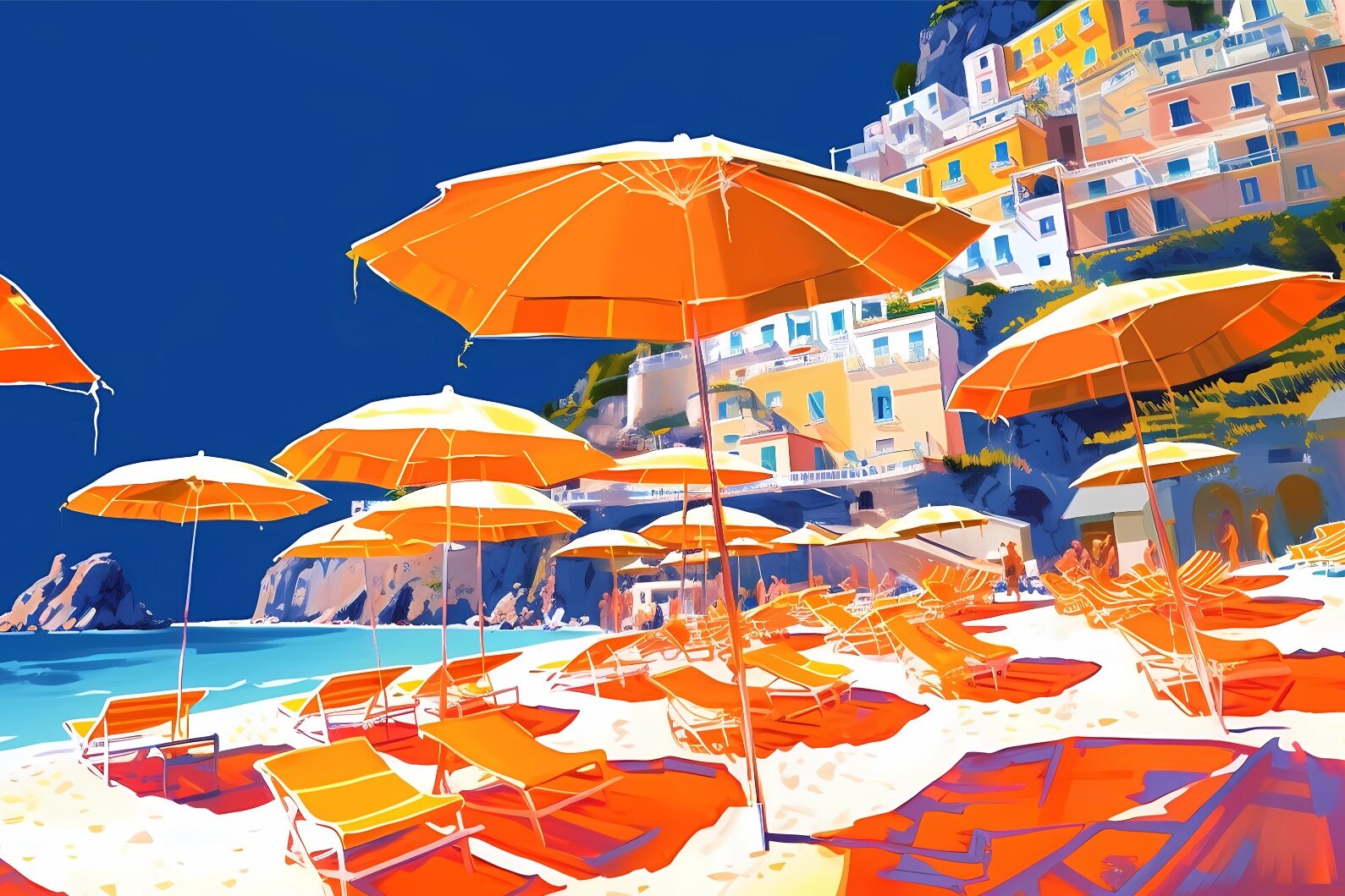I left my hotel at 7am and walked to the SITA bus stop ready for a day on the road. I’d heard about the narrow, windy mountain roads on the Amalfi Coast but thought everyone was probably just exaggerating when they spoke of the frightful drive hugging the side of the cliffs from Sorrento to Positano, Amalfi and Ravello. I’d never been afraid of heights, never gotten motion sickness – what was there to worry about?
Making sure to validate my 24-hr bus-ticket as I got on-board, I snagged a seat on the right side of the bus so I’d have a view of the water, pulled out my camera and tucked in for the ride. Andiamo!
As we left Sorrento for Positano, a town so many people had told me is their favorite in all of Italy, the road got narrower and began to twist and turn with the natural shape of the cliffs along the coastline. The water of the Tyrrhenian Sea, down far below the narrow mountain road, was bluer than any water I’d ever seen. It blended into the sky at the horizon. With no land in sight to the left or right it made me feel like I was perched precariously on the side of this gigantic rock with the very real possibility of tipping over the edge into infinity. That’s when the nausea started.
It takes about 50 minutes to get from Sorrento to Positano. Around every turn the bus slowed down, almost coming to a stop, and the driver held down the horn to alert anyone coming in the other direction of our approach. It makes for a slow – and quite nerve-wracking! – ride.
We finally got to Positano and I jumped off at the second stop, supposedly the most convenient for exploring the town, and started to walk – or should I say climb? – through town.
Positano doesn’t have streets; it has steps. Narrow, steep, stone steps. Packed into a recess in the cliff, its virtually vertical lanes wind through short pastel buildings that house art galleries, boutiques and quaint cafés. I bounced down toward the beach where bikini-clad tourists were starting to claim their spots for the day, already dreading the walk back up to the bus stop. Out on the concrete dock there were three young boys with fishing poles, laughing with each other as they tossed their lines. The dock extended to the right around the side of the mountain face and, always looking for a place to go to flee tourists, that is where I headed.
After a few minutes an old man and someone who I assumed was his son walked around the corner of the rock and sat down about halfway between me and the young fishermen. The old man was carrying a jute sack, which he set down beside him, opened it up and took out a stale loaf of bread. He broke off a piece and threw it to the birds idling around the edge of the water while he and his son spoke. It had the feeling of routine to it. It was lovely.
Next stop, Amalfi. Between 839 and 1200 AD, Amalfi was the capital of the Duchy of Amalfi, a strong maritime force in the region, and is still very much a port town. I only walked around for a little bit before eating lunch on the coastline and deciding to take switch busses to take the last route up to Ravello.
Like Positano and Amalfi, Ravello is on the coast of the Tyrrhenian Sea. Unlike Positano and Amalfi, however, Ravello has no beaches. It sits at the top of a cliff overlooking the sea, enjoying the coastal breeze and incredible westerly horizon while maintaining a detached, almost other-wordly quality that transports you to a hidden garden in the sky.
I can’t say I took the time to explore all of Ravello – I had less than two hours before the last bus left back toward Sorrento – but the gardens of Villa Cimbrone in-and-of-themselves were well worth the trip. An Englishman named Ernest Beckett bought the 11th Century villa in 1904 and worked with a local gardener to expand and develop the gardens, creating areas like “Eve’s Grotto”, the “Terrace of Infinity” and “Mercury’s Seat”. In 1960 the Vuilleumier family purchased the villa and, after a short time using it as a private residence, opened it as a hotel! (Talk about the perfect honeymoon…)
The bus ride back from Ravello – again changing busses in Amalfi – is close to 2.5 hours long when its all said and done, but after a long day climbing the steep streets of Positano, exploring the coastline in Amalfi and trekking the cliffs and gardens of Ravello, a chance to sit and enjoy the drive while the sun began to set over the water (queasiness aside) was very welcome. I made it back to Sorrento just in time to enjoy a leisurely dinner and go through my numerous photos, which have inspired my mother to want to take the same bus ride when I introduce her to Sorrento this December. This time I’ll be sure to pack the Dramamine.
Jessica is a travel enthusiast and entertainment executive living in Los Angeles. Her independent travels through Italy have inspired her travel blog, OneDayInItaly.com































